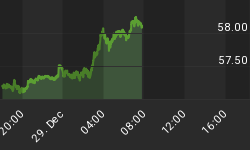A British energy entrepreneur and former Formula 1 racing team owner, Stephen Fitzpatrick, thinks he’s got exactly what it takes to build a new inter-city “flying taxi” services and launch it through a UK startup by 2022.
Welcome to the real beginning of the race to build electric vertical take-off and landing (eVTOL) aircraft—the taxis of our (apparently) near-future.
“We are investing in all the technology evolution taking place in aerospace but we are trying to apply that to something that’s real world and is possible to execute four years out,” Fitzpatrick, the founder and CEO of the bold new startup, Vertical Aerospace, told Reuters.
The startup is planning to offer short-haul inter-city flights to multiple, simultaneous passengers using a piloted aircraft.
The startup has been working on the idea for two years, and is banking on a team of some 30 veteran aerospace and technical experts with dynamite CVs, including experience with Airbus, Boeing, Rolls-Royce, Martin Jetpack and GE.
We’ve already seen drone-helicopter hybrids tested globally, so the idea of a flying taxi isn’t as sci-fi as it might have been just a short while ago. But this time it’s different, says Vertical Aerospace.
This time, it’s about going beyond concept and putting the idea into practical application. Nor is it even far-fetched. According to Fitzpatrick, many eVTOL components are comparable—from a technological standpoint—to those he is familiar with from his Formula One days. Related: Trump Urges Apple To Build Products In The U.S.
“We’ve learned a lot from Formula 1, both in terms of technology and pace of development,” said Fitzpatrick, as reported by The Verge. “The lightweight materials, aerodynamics and electrical systems developed through F1 are highly applicable to aircraft, much more so than to road transport. By putting those technologies in the hands of experienced aerospace engineers, we can build cutting edge aircraft for the 21st Century.”
Is 2022 realistic?
Well, others in this air taxi race say they’ll get there before Vertical Aerospace.
Uber, for one, thinks it’s going to get to the sky quickly. In fact, it’s teamed up with NASA on an air-ride-hailing concept using autonomous passenger drones. And it’s saying it will be in the air in two years. The concept focuses on helicopter-style rotors for vertical take-off and landing, and fixed wings for traveling up to 200mph over longer distances.
There is also Volocopter, which is testing drone taxis that resemble a small helicopter powered by 18 rotors, and AeroMobil, with a stretch-limousine concept that can turn into a fixed-wing aircraft.
Flying car startup Kitty Hawk unveiled its new vehicle this year, the Flyer, which its CEO says is “as easy to fly as playing Minecraft.”
Amid all of this competition, Vertical Aerospace insists it’s in the front of the pack in this crowded race--and it’s targeting some of the most congested air corridors in the world using aircraft that don’t need runways and that can also travel for up to 500 miles.
There is room for more than one winner, though.
After all, annual air passenger journeys are projected to reach $7.2 billion by 2035.
By David Craggen for Safehaven.com
More Top Reads From Safehaven.com

















